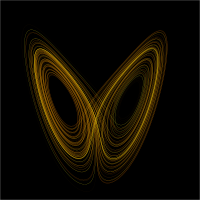
Photo from wikipedia
HighlightsA dynamic model is formulated to describe ultrasonic lubrication systems.The approach considers ultrasonic lubrication as a system phenomenon.Experimental data is used for model validation.A parametric study based on the model… Click to show full abstract
HighlightsA dynamic model is formulated to describe ultrasonic lubrication systems.The approach considers ultrasonic lubrication as a system phenomenon.Experimental data is used for model validation.A parametric study based on the model is presented.This study provides guidelines for designing ultrasonic lubrication systems. ABSTRACT Ultrasonic lubrication can be achieved by superimposing ultrasonic vibrations onto the relative sliding velocity between two surfaces. Ultrasonic vibrations are typically generated by a piezoelectric actuator. Relative to the macroscopic velocity, the vibrations can be longitudinal, transverse, or perpendicular. Often considered as a purely interfacial effect, ultrasonic lubrication is in fact a system phenomenon incorporating the dynamics of the actuator, sliding surfaces, and surrounding structure. This article presents a dynamic system model for ultrasonic lubrication configured in perpendicular mode, as experimentally measured with a modified pin‐on‐disc tribometer. The framework includes a lumped‐parameter, dynamic model for the tribometer, an electromechanical model for the piezoelectric transducer used to generated the ultrasonic vibrations in the tribometer, and a “cube” model for the contact mechanics between asperities. Electrical impedance, system vibrations, and friction reduction are examined. Results show a strong match between experiments and simulations with errors lower than 10%. A parametric study is conducted to investigate the influence of driving voltage, macroscopic velocity, driving frequency, and signal waveform on ultrasonic friction reduction.
Journal Title: Ultrasonics
Year Published: 2017
Link to full text (if available)
Share on Social Media: Sign Up to like & get
recommendations!